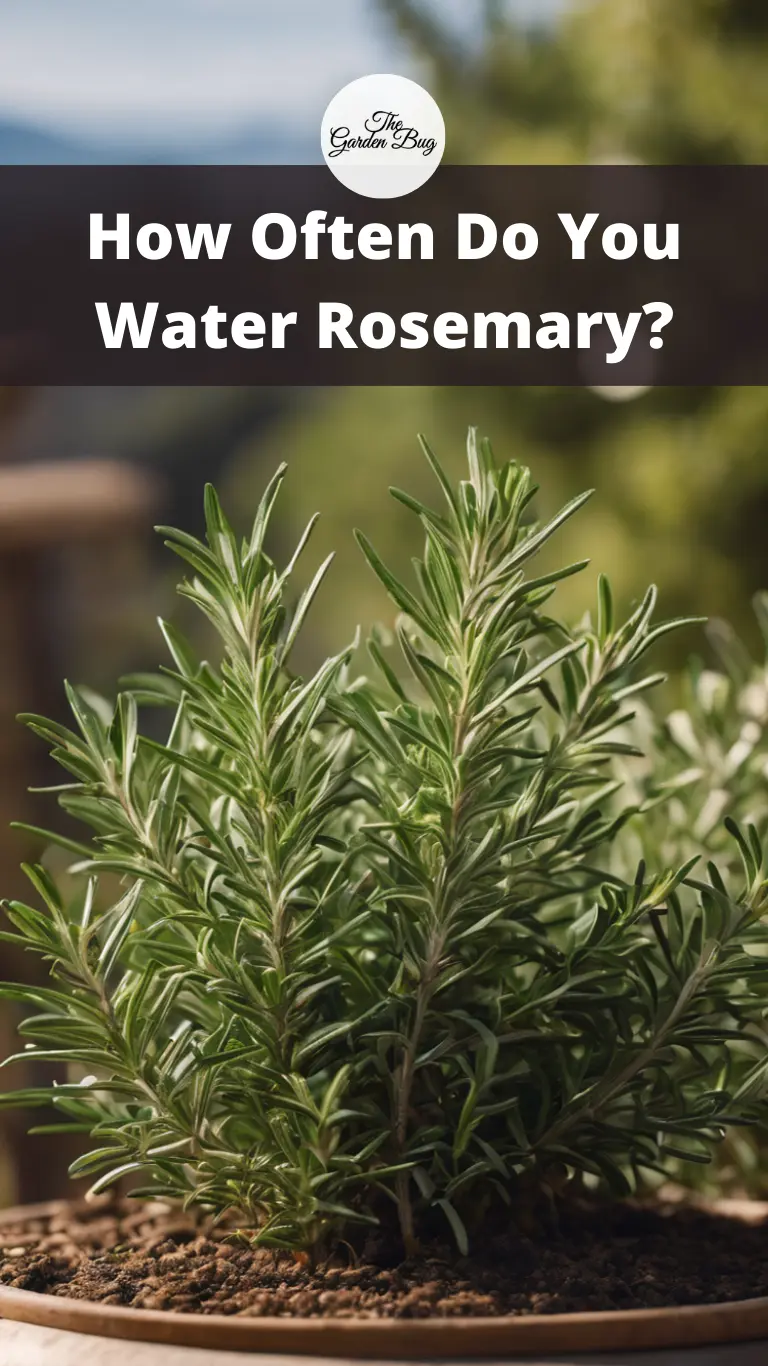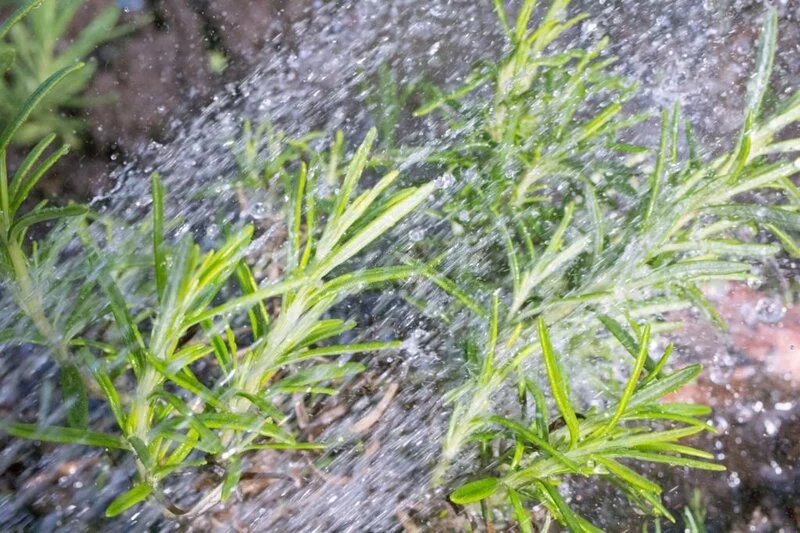Rosemary – a beloved herb known for its distinct, aromatic flavor, and its use in various dishes around the world. Whether you’re a seasoned gardener or a beginner, learning to care for this evergreen shrub can be a delightful journey. One crucial aspect of rosemary care is understanding its watering needs, which we’ll be focusing on in this article.
Rosemary’s Watering Needs
Native to the Mediterranean, rosemary is accustomed to hot, dry climates, making it a relatively drought-tolerant plant. This herb prefers a ‘soak and dry’ approach to watering, which means allowing the soil to dry out between waterings. Watering frequency can change depending on several factors like the size of the plant, the type of soil, and the local climate. Overwatering can often be a bigger issue than underwatering for rosemary, as it doesn’t like to sit in soggy soil. So, it’s all about striking a balance, and we’re here to guide you through it.
Factors Affecting Watering Frequency
Several factors can influence how often you need to water your rosemary plant. These include the size of the plant, the type of soil, the pot or container it’s planted in, and the local climate. Bigger plants in small pots may need more frequent watering, while smaller plants in larger pots may require less. The type of soil is also critical; well-draining soil can help prevent overwatering by allowing excess water to escape, reducing the risk of root rot. Lastly, if you’re growing rosemary in a hot and dry climate, it might need more frequent watering compared to a cooler, more humid environment.
- ALL-IN-ONE POTTING SOIL SOLUTION: FoxFarm ocean forest potting soil is a blend designed to give your plants everything they need to thrive. Ideal for container plants, this planting soil provides optimal nutrient and soil aeration
- MOISTURE-LOCKING NUTRIENT BLEND: This organic potting soil for plant is packed with aged forest products, sphagnum peat moss, earthworm castings, bat guano, and fish emulsion, each ingredient enhances moisture retention and nutrient uptake
- TOP-NOTCH SOIL FOR EVERY PLANT: From roses and shrubs to seedlings and trees, this garden soil supports vigorous growth and branching. This outdoor & indoor plant soil’s pH-adjusted blend promotes healthy, lush foliage for all plant varieties
- YOUR GO-TO SOIL FOR ALL MEDIUMS: Our potting soil mix is perfect for container gardens, houseplants, and outdoor setups. Ocean plant versatile blend provides a balanced environment for robust growth, ensuring your plants thrive in any setting
- CONVENIENT SOIL READY TO USE: This houseplant potting soil is ready to use out of the bag, no additional ingredients are needed. Use for planting or top-dressing, with the optional pairing of FoxFarm liquid fertilizers for enhanced growth all season
Step-by-Step Guide to Watering Rosemary
- Check the soil: Before watering, always check the top inch of soil. If it’s dry to the touch, your rosemary is ready for a drink.
- Water deeply: When you water, make sure to do so deeply, so the water reaches the plant’s roots.
- Drain excess water: Ensure your pot or container has good drainage, as rosemary doesn’t like to sit in water.
- Dry out between waterings: Allow the soil to dry out between watering sessions. A parched rosemary is better than a drowned one!
Remember, your rosemary plant will tell you when it needs water. If its needle-like leaves start to droop or lose their vibrant green color, it may be time to give it a drink.
Signs of Overwatering and Underwatering in Rosemary
Learning to recognize the signs of overwatering and underwatering can help you adjust your rosemary’s watering schedule to its liking. Overwatered rosemary may exhibit yellowing leaves, a lack of new growth, or a wilting appearance even when the soil is wet. In severe cases, you might notice root rot, which can be fatal to the plant.
Underwatered rosemary, on the other hand, may have brittle, dry leaves. The leaves may also drop prematurely, and you might see slow or stunted growth.
- Tuscan Blue Rosemary Plant Pot: Tuscan Blue Rosemary is an annual herb which features fragrant, grayish-green, needle-like leaves. Known for their edible as well as ornamental qualities, these plants are usually harvested from early to mid-summer.
- Indoor Plants: Tuscan Blue Rosemary plants produce beautiful, fragrant, deep blue to violet-colored flowers in bloom. This plant is also an ideal pick for a personal herb garden. The USDA hardiness zone for outdoor planting is 8–10.
- Easy Maintenance: Tuscan Blue Rosemary plants are easy to care for; they need full sunlight and temperatures over 30° F. A heat pack is included with each plant if your region experiences cold weather.
- Home and Garden Decor: Our Tuscan Blue Rosemary plant pot is perfect for windowsills, countertops, desks, and tables in your home or garden. The plant, which can grow up to 6′ tall at full height, is also a great gift option for friends and family.
- Health Benefits: Live plants purify the air in their surroundings and thus enable you to inhale clean, fresh air while also helping to boost mood levels. The plant is a non-toxic edible herb and is also safe for pets.
Tips for Maintaining a Hydrated Rosemary Plant
- Always check the soil before watering. Remember, rosemary prefers dry soil between watering sessions.
- Use a well-draining soil to prevent water from sitting at the roots.
- Consider the size of your plant, the pot, and your local climate when determining a watering schedule.
- If you’re unsure whether to water, it’s typically better to wait. Rosemary is more forgiving of dry conditions than wet.
Conclusion
Taking care of rosemary involves understanding its Mediterranean roots. A little attention to its watering needs can help you maintain a healthy and happy plant, filling your garden or home with its delightful scent and flavor. So, grab your watering can and give your rosemary the care it deserves. With a little practice and patience, you’ll become an expert in no time!







